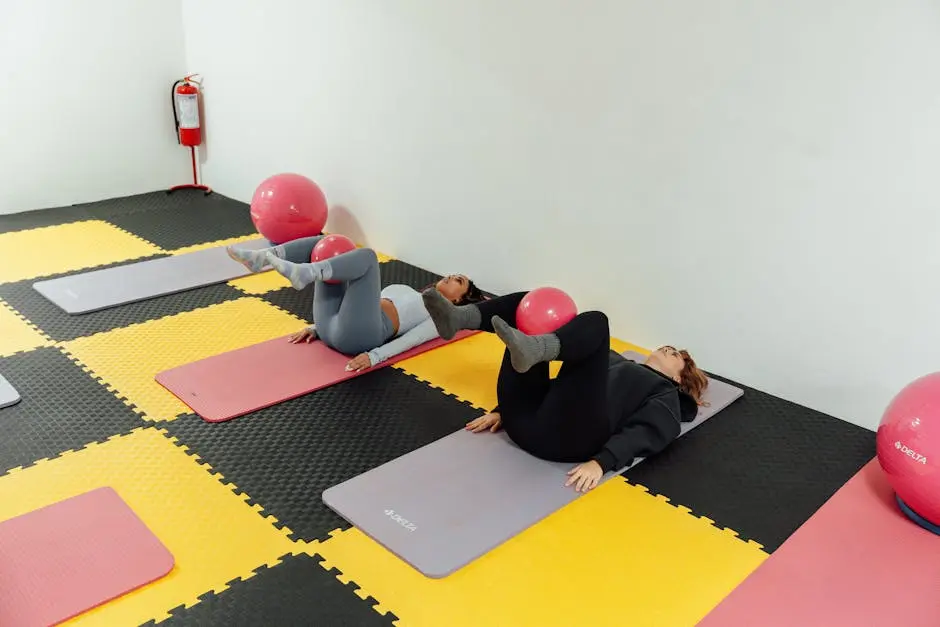Hot yoga can be an invigorating and transformative practice, but it can also come with its challenges. Whether you are a beginner or a seasoned practitioner, maximizing your hot yoga experience is key to enjoying all the benefits that come with it. In this article, we will explore various tips that will help you enhance your sessions, feel more comfortable, and achieve your personal best.
1. Hydration is Key
Hydration is crucial for a successful hot yoga session. The heat can lead to excessive sweating, which results in a loss of fluids and electrolytes. To prepare, it’s essential to start hydrating well before your class. Aim to drink plenty of water throughout the day and consider electrolyte-rich beverages that can help you replenish what you lose during your practice.
During class, keep your water bottle nearby to take sips whenever needed. Remember, it’s better to drink small amounts consistently rather than guzzling large quantities at once. This approach not only keeps you hydrated but also prevents discomfort during your practice. Listen to your body and replenish fluid as necessary, especially if you start to feel dizzy or overheated.
2. Choose the Right Attire
Selecting the appropriate attire for hot yoga can greatly impact your comfort and performance. Opt for lightweight, breathable fabrics that wick moisture away from your skin. Tight-fitting clothes can help you move freely, but ensure they are not too restrictive. Look for materials like polyester or spandex that allow for stretch and breathability.
Additionally, be mindful of layering. While it may seem counterintuitive, consider bringing a light jacket for before or after your session to help your body gradually adjust to temperature changes. Avoid cotton as it absorbs sweat and can become heavy and uncomfortable. Ultimately, your clothing should enhance your mobility and confidence while practicing, enabling you to focus on your poses.
3. Arrive Early to Prepare
Arriving early to your hot yoga class sets the tone for the practice ahead. By getting to the studio with ample time, you can settle in, roll out your mat, and take a moment to breathe. This early arrival also gives you the chance to adjust to the heat before the class officially starts.
Once you’re there, take the time to mentally prepare. You might engage in some light stretching or simply sit in a quiet corner to clear your mind. This grounding practice can help you drop any distractions, allowing you to engage fully in the hot yoga experience. Plus, familiarizing yourself with the environment helps alleviate any potential anxiety and creates a more focused mindset.
4. Warm Up Your Body
Although the heat is naturally warming your body, incorporating your own warm-up routine can enhance your flexibility and prevent injury. Start with gentle stretches or movements that target the areas you’ll be using in class. Engaging in this practice can make a significant difference, especially since the muscles may feel tight after the transition from a cooler environment.
Focus on your major muscle groups, such as the shoulders, hips, and legs. Consider also performing dynamic stretches that mimic some of the poses you will practice during the class. Warming up not only prepares your body but can also enhance your overall performance, allowing you to fully experience the benefits of each asana.
5. Listen to Your Body
One of the most important aspects of hot yoga is learning to listen to your body. Each session will feel different, and it’s essential to honor those variations. If something does not feel right, whether it’s pain or fatigue, don’t hesitate to modify your practice. Take breaks or skip poses that don’t serve you that day.
This self-awareness can enhance your experience and prevent injuries. Progress in hot yoga is not always linear, so be compassionate with yourself. Remember, yoga is about your personal journey, and respecting your body’s limitations is key. This mindful approach fosters not only physical growth but also emotional resilience, making each practice a unique opportunity for self-discovery.
6. Use a Towel for Comfort
Using a towel during your hot yoga session can vastly improve your comfort. This simple accessory absorbs sweat and provides a non-slip surface on your mat, which is especially helpful as the session progresses and you begin to perspire more. A towel can also help prevent slipping during challenging poses, making your practice safer and more enjoyable.
Additionally, some yogis prefer to bring a personal towel to drape over their yoga mat. This way, they establish a familiar and clean space for their practice. Choose a towel designed specifically for yoga, as these often feature materials that provide a good grip. Investing in a high-quality towel can be beneficial, as it enhances stability in poses while promoting an overall sense of ease throughout your class.
7. Focus on Your Breath
Breathing is the foundation of yoga, and in hot yoga, it becomes especially vital. Focusing on your breath can help you maintain your stamina, calm your mind, and deepen your practice. As you engage in postures, ensure you’re incorporating deep, mindful breaths rather than shallow, quick breaths that add tension.
One technique to enhance your breathing is to practice ujjayi breath, also known as victorious breath. This technique involves slightly constricting the back of your throat as you inhale and exhale, creating a soft ocean-like sound. This method not only helps regulate your breath but can also create a meditative atmosphere during your practice, allowing you to connect more deeply with yourself and the rhythm of your movements.
8. Build Up Your Practice Gradually
Hot yoga can be intense, and as with any physical practice, it’s vital to build up your strength and flexibility gradually. If you’re new to hot yoga, consider starting with shorter sessions and gradually increasing your attendance or duration as your body adapts. This approach minimizes the risk of burnout or injury, allowing your body to adjust at its own pace.
Incorporating a variety of classes can also help. Explore different levels and types of hot yoga to find what resonates with you, and don’t be afraid to take breaks or modify poses that feel too challenging. Progress is a beautiful aspect of yoga, and patience will reward you with a richer and more enjoyable practice.
9. Explore Different Styles of Hot Yoga
Hot yoga encompasses a variety of styles, each offering unique benefits and challenges. Whether you’re drawn to Bikram, Vinyasa, or another format, exploring different styles can add a new layer of excitement and engagement to your practice. Each class has its philosophy and structure, allowing you to experiment and find what aligns with your personal preferences.
Trying various styles can also enhance your overall skill set. For example, Vinyasa emphasizes flow and transitions, while Bikram focuses on a set series of poses. By diversifying your practice, you enhance your adaptability and learn how to approach poses from different angles, providing a comprehensive experience that enriches your journey.
10. Stay Mindful During Class
Practicing mindfulness during your hot yoga class transforms your experience from physical exertion into a meditative practice. By remaining present, you can cultivate a deeper connection to your body and mind. Focus your attention on your breath, your movements, and the sensations within your body. This level of awareness helps you to disengage from the outside world and encourages a sense of peace.
Challenge yourself to notice how you feel in different poses, observing areas of tension and relaxation. This practice of mindfulness not only reduces stress but also helps you grow emotionally, fostering gratitude for your body and its abilities. Embracing each moment with intention turns your yoga practice into a moving meditation, making it a fulfilling experience both on and off the mat.
11. Cool Down After Your Session
Cooling down after a hot yoga session is just as important as warming up. It allows your body to gradually transition back to a resting state and minimizes muscle soreness. Following your practice, consider engaging in gentle stretches or restorative poses to support recovery. This phase is vital for releasing any residual tension and promoting relaxation.
Additionally, take time after class for proper hydration and refueling with nutritious foods. Replace lost electrolytes and fluids by enjoying hydrating snacks such as fruits or smoothies. Caring for your body post-workout is an integral part of a well-rounded practice, contributing to your overall well-being and preparing you for your next session.
12. Seek Guidance from Instructors
Engaging with your instructors during hot yoga can provide a wealth of knowledge and support. Don’t hesitate to ask questions about poses or seek adjustments to improve your form. Instructors can offer personalized feedback that enhances your practice and helps you delve deeper into more challenging variations.
Additionally, participating in workshops hosted by instructors is an excellent way to expand your knowledge and skills. These sessions often cover specific themes, such as alignment, breathing techniques, or deeper aspects of yoga philosophy, offering insights that can transform your experience in the studio. Remember, seeking guidance is a sign of dedication and desire to grow in your yoga journey.
13. Incorporate Hydrating Foods into Your Diet
Staying hydrated is essential, and a diet rich in hydrating foods can significantly complement your hot yoga practice. Foods such as cucumbers, watermelon, and oranges are excellent choices as they contain high water content and provide essential vitamins. These fruits and vegetables not only keep your hydration levels up but also help to replenish electrolytes that are lost through sweating.
Incorporating these hydrating foods into your meals can also improve digestion and overall wellness. Consider adding smoothies or salads featuring these ingredients to your post-yoga meals. Make it a fun routine to explore different recipes, making hydration not only beneficial but also enjoyable. Your body will thank you for the care you provide through nutrition.
14. Create a Post-Yoga Routine
Establishing a post-yoga routine is essential for solidifying the benefits of your practice. It can be as simple as a few moments dedicated to stillness and reflection or as intricate as a series of stretches followed by a healthy meal. The crucial element is to create a routine that resonates with you and deepens your connection to your practice.
Consider taking a short time to journal your thoughts after each session. Documenting your feelings and experiences can enhance your self-awareness and track your progress over time. This practice encourages mindfulness and sets a tone of gratitude. Whether through written reflection or a mindful meditation, developing a post-yoga routine ensures that you honor not only your physical practice but also the mental and emotional growth that comes from it.
15. Reflect on Your Progress
Taking time to reflect on your progress in hot yoga is vital for personal growth. Regularly check in with yourself about your experiences, feelings, and improvements in your practice. Yoga is a journey, and celebrating even small milestones can be incredibly motivating. Recognize how far you’ve come and how each session contributes to your overall well-being.
Consider incorporating self-reflection into your post-yoga routine. This might look like evaluating your physical abilities, such as increased flexibility or strength, alongside the mental clarity that comes from your practice. Creating this habit of assessment fosters a deeper understanding of your unique yoga journey, encouraging you to stay committed and engaged in the process.







Leave a comment
This site is protected by hCaptcha and the hCaptcha Privacy Policy and Terms of Service apply.